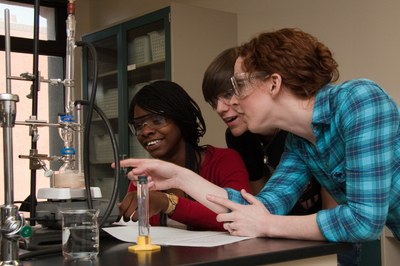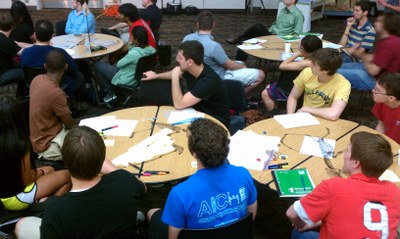The Practicum/UTA strategy
If you are a UofL student in a STEM major and are interested in becoming a UTA, please contact your Departmental Coordinator.
Conceptual Framework
This strands conceptual framework is built around three mutually intersecting groups: STEM faculty, STEM undergraduates, and STEM Undergraduate Teaching Assistants (UTAs). In order to strengthen retention of STEM majors, the mutually reinforcing benefits of a simultaneous focus on these three key groups will guide this strand. At the heart of this triad are the UTAs, which will be the primary focus here. The Colorado Learning Assistant Model forms the foundation for our approach of focusing on the UTAs as the means to impact not only that group, but also the STEM faculty working with them and the undergraduates in whose classroom the UTAs will be teaching.
Implementation
UTAs are recruited by each of the 8 participating STEM departments for placement in the foundational courses for that department. The exact nature of the work performed by the UTA not only varies by department, but also by the course. UTAs have been used as laboratory TAs, as instructors in recitation or supplemental instruction sections, or as classroom assistants during the normal course time.
- Arts and Sciences
- Chemistry
- Geosciences
- Mathematics
- Physics and Astronomy
- J.B. Speed School of Engineering
- Bioengineering
- Chemical Engineering
- Civil Engineering
- Engineering Fundamentals
 Workshop and Seminars
Workshop and Seminars
Once recruited, the UTAs sign up for a class entitled Practicum in ___ Education. This course starts with a 3-day workshop covering some basic concepts in teaching pedagogy
Five seminars are held throughout the semester to help support the UTAs as they work with their students, but also to help reinforce the pedagogical concepts introduced during the workshop.
